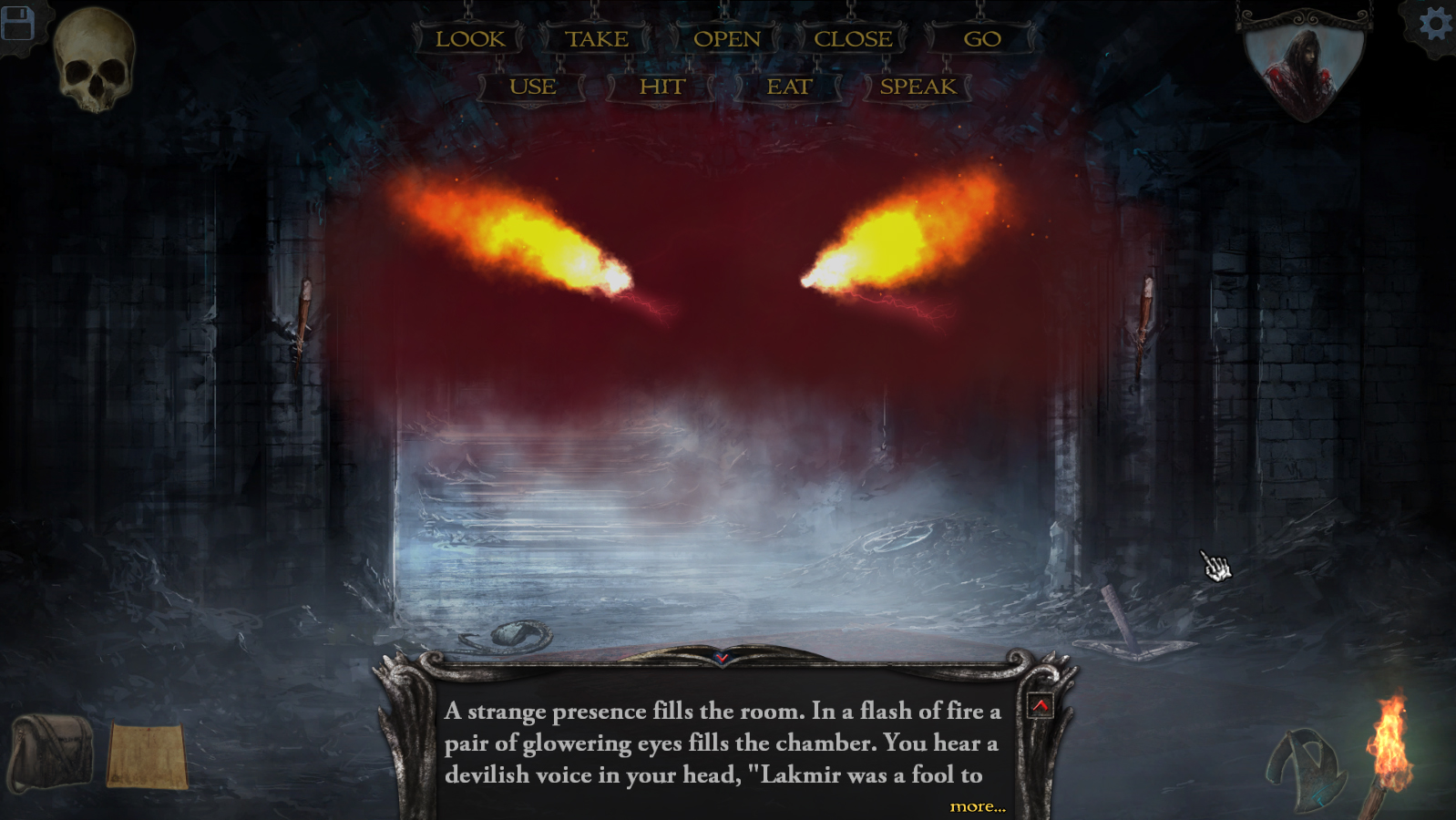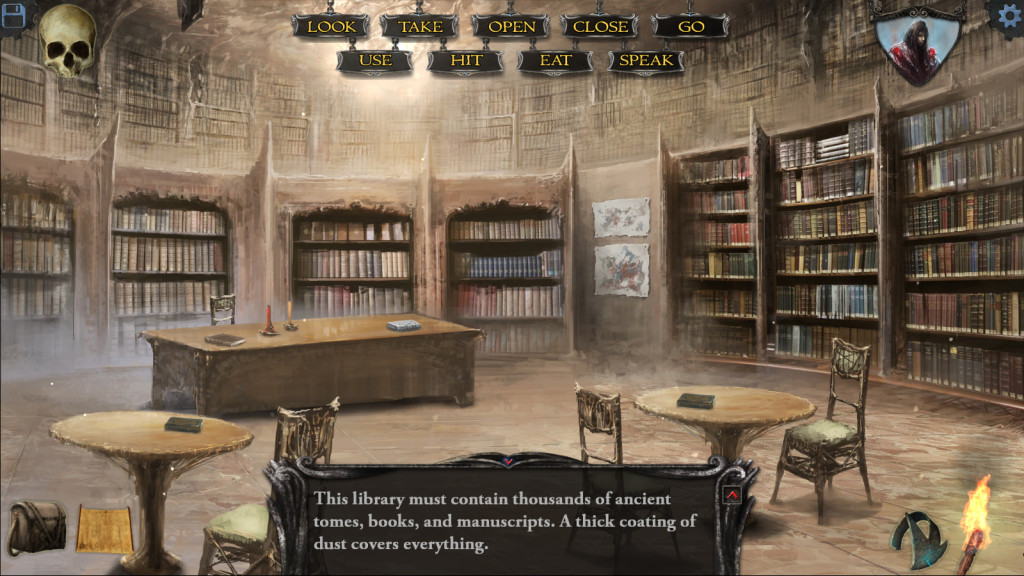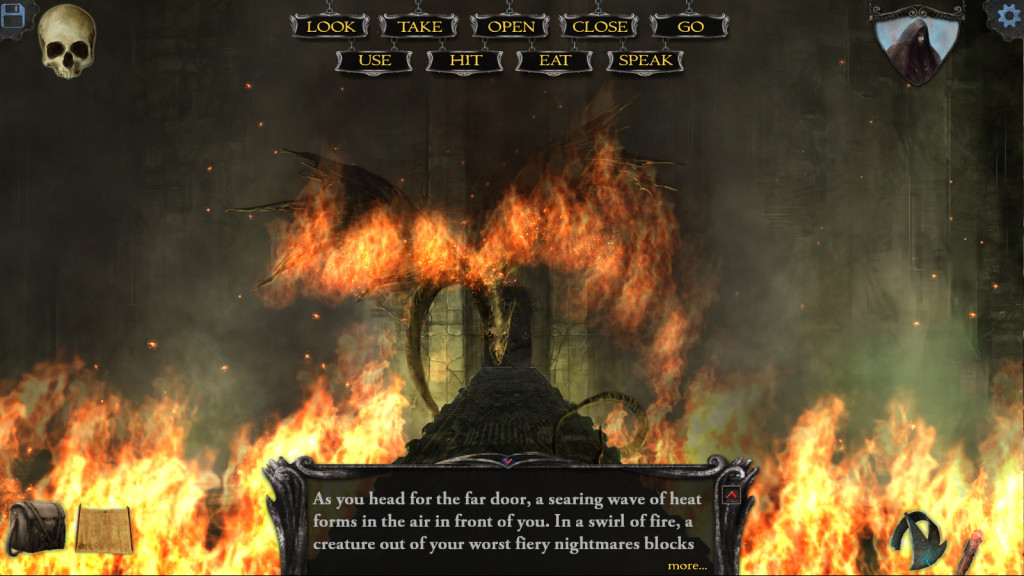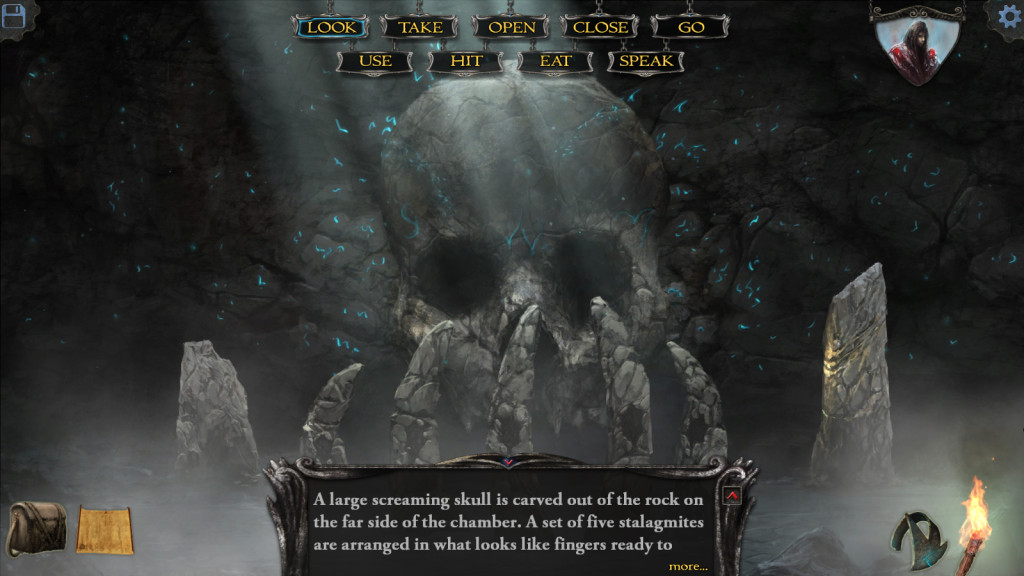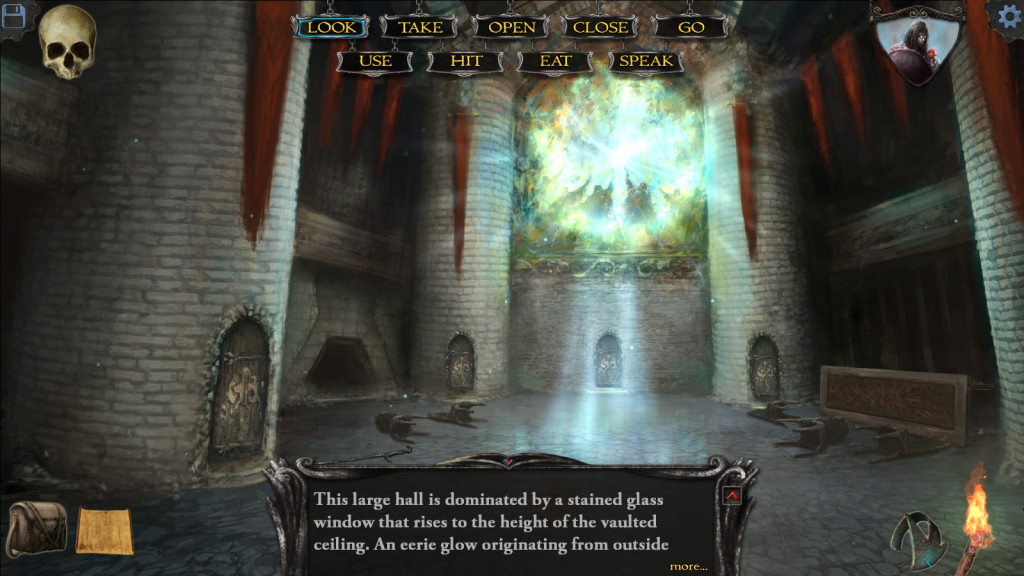It was recently announced that Sierra was developing an updated version of their classic adventure game, King’s Quest. While King’s Quest is considered the gold standard in adventure gaming, it was far from the only title to distinguish itself. Another such title was Shadowgate, a much beloved- and notorious- adventure, renowned for being one of the hardest and most unforgiving play experiences of its time. Thanks to developer Zojoi, Shadowgate is back and unforgiving as ever.
The fact that we have two prodigious adventure titles slated for release around the same time is curious. More curious, still, is the fact that they will be remakes that (ostensibly) remain true to their original counterparts. The genre has undergone such a metamorphosis over the years that the current classification of the adventure game bears scarce resemblance to the original. In fact, rarely do you see the word adventure used in classifying a game without being paired with the word action. The big questions are whether this style of game still has a place (it does) and can it be popular (it should). Let’s not turn this review into a referendum on the adventure game, though; we are here to weigh and measure Shadowgate.
While the style of gameplay on display is quite jarring for old and new gamer, alike, Shadowgate nonetheless finds itself in a curious position. It inhabits a niche where nostalgia and novelty collide,. For old school gamers, like myself, this title appeals to my sense of nostalgia, much in the way Might & Magic X: Legacy did, earlier this year. For the newer generation of gamers, however, unacquainted with the MacVenture or NES versions of the game, the novelty of an experience not just retro in look and play, but in genre.
Most aspects of the Shadowgate remain true to the original. You move from vignette to vignette in an attempt to progress story and extend life. Each vignette will pose a series of obstacles for you to overcome from the most basic (opening portals and retrieving items) to the highly complex (unlocking the mysteries of spell-use and making oblique connections between items). Most of these vignettes are not hampered by a timer so you can puzzle out solutions at your leisure. Some, however, will require quick thinking and precise action- usually accompanied by many restarts. This will be established early on with the dragon’s lair encounter.
While painstaking efforts were taken to remain true to the original Shadowgate, developers could not ignore the vast opportunities available to them when no longer hampered by stringent graphic limitations. Each of the new vignettes is hand painted with a style and detail the original designers could only have dreamed of. Normally, this would amount to little more than a face-lift, but in an adventure game, the style and detail of a scene means everything. Each environment is beautifully painted conveying both mood and information to help a player forward. Furthermore, many of the clues and narrative markers are deftly concealed in the scene, forcing players to pour over each picture as though searching for a eldritch Waldo. I am embarrassed to say that early on I spent 30 minutes stuck in a room because I failed to notice the pale form of a key, frozen inside a block (that’s your one hint from me).
The accompanying soundtrack is appropriately atmospheric but will largely go unnoticed, I suspect, once the real concentrating starts. Many times you are only reminded of its continued dirge when you have run out of time and are about to meet with an unpleasant fate. Actually, this happens a lot, so maybe you will notice the music more than originally stated…
This leads me to the game’s legendary difficulty. To say it is “hard” is actually a bit inaccurate; the game simply challenges the player to use her eyes and her mind to reveal and overcome each obstacle. The more apt description is that the game is unforgiving. Each vignette is exactly that and once you are in it, any (and sometimes every) action you take can end in immediate death. There is no block button, or tumble option; you will not be able to quickly exit the room to avoid the monster or trap. You press the red button, you die; it is as simple as that. Take [another] look at the charcoal reaper and click reload. But, while this is a major part of the game’s charm, it can get old- even for the old school. Consider yourself lucky then, that the developers found it in their hearts to include multiple difficulty settings. While changing to an easier setting doesn’t affect the core game, it will swap out some of the harder puzzles with easier versions and create a more forgiving gameplay experience. I don’t recommend admitting to your friends that you did this though.
Now we are left with the 800 pound gorilla in the room- the interface. The systems, on which the interface is based, are very basic and rely on rote actions that (in theory) become pure muscle memory allowing you to quickly and smoothly interact with the vignette and push the narrative along. This may be true for some but for many players it will undoubtedly become a frustrating endeavor. And it won’t be in those taut instances where every second counts that frustration sets in (in those cases it usually ends in a good laugh when your comedy of errors ends with you a smoking heap on the floor). It will be when you are simply trying to test out inventory items on a seemingly mundane scene object. You’ll get out of order and start a tedious cycle of mis-clicks where you aren’t sure if you are continuing the incorrect chain or starting anew. Lucky for you, each incorrect use returns an insightful message letting you know that the rock will not talk back, or that the mirror does not need to be swept with the broom (that’s sarcasm kids).
For me, the frustration turned to disappointment when I realized that the basic systems being used were not leading to more open-ended puzzle solutions. Initially I hoped that the time saved on updating the interface to a more modern version meant that they were rewarding players with a wider array of choices for each vignette. As fidelity was as much a goal in this version of Shadowgate as anything else, my criticisms in regards to this issue might be unfair and more along the lines of ill-placed wishful thinking.
But enough with being negative. I am all about the positive. This re-imagining of the classic packs enough in way of thrills, challenges and atmosphere to justify its existence. It is an (un)friendly reminder of a style of gameplay that simply is not seen any more and should be experienced by everyone, at least once. Yes, the interface is cumbersome and the level of difficulty is daunting, but that is part of its charm. Hell, if a game hasn’t infuriated me to a point where I am speaking in tongues, at least once, then I don’t consider it a meaningful experience.
With Shadowgate, my wife thought I was possessed.

